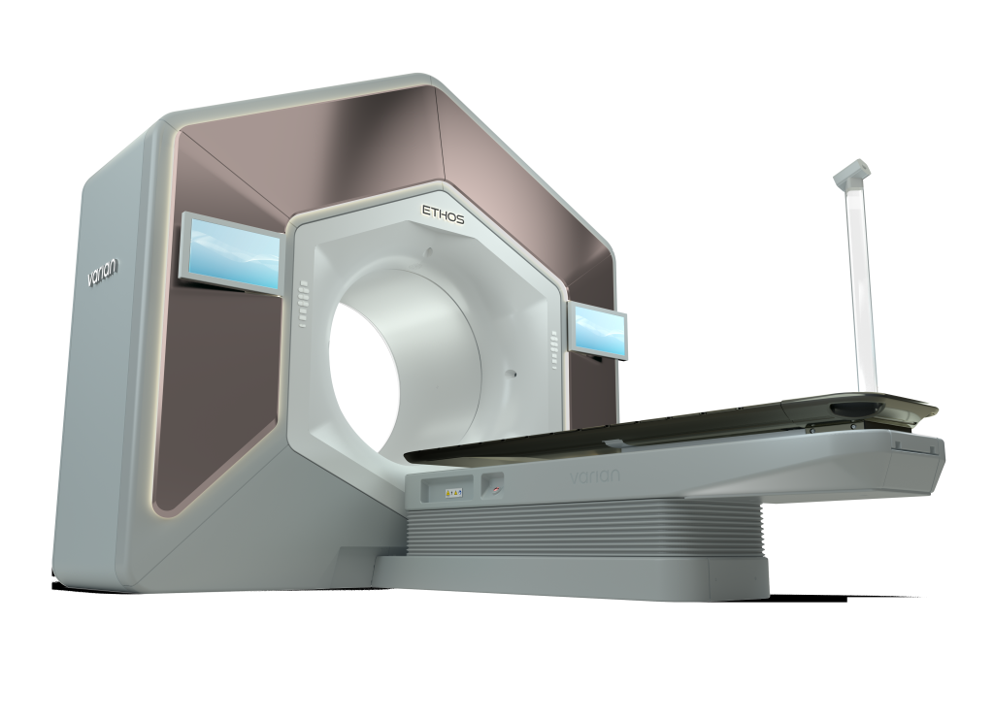About Radiation Therapy

What Is Radiation Therapy?
There are many different types of radiation therapy. External beam radiation is when a machine outside the body directs radiation beams to the tumor. Internal beam radiation is when seeds or wires are placed inside the body near or within the tumor. IMRT or Intensity-Modulated Radiation Therapy is when the external beam is shaped to fit the tumor and minimize damage to healthy tissue or nearby organs. SBRT is Stereotactic Body Radiation when external beam is delivered in a very high dose with precise beam to a very small area. Proton beam radiation is particle therapy, delivering precise radiation to the tumor sparing damage to nearby healthy tissue and organs. Every treatment requires specific conditions for optimal benefits, which can be discussed with your radiation oncologist.
Provision Radiation Therapy offers personalized radiation therapy with the most advanced Ethos system with Adaptive Therapy. The new AI-driven Adaptive Therapy planning is a unique and innovative feature that allows treatment planning in real-time to daily anatomical changes, increasing precision, improving tumor targeting and reducing harm to healthy tissue. Key benefits include personalized and precise treatment, faster adaptation, enhanced patient experience with faster treatments and greater efficiency for patients.
How does radiation therapy work?
Your body is made up of millions of normal healthy cells. Cancer starts when something changes a normal cell into a cancer cell. This cancer cell then grows and makes more cancer cells until a tumor is formed. This tumor can grow and cause problems. If the cancer is not treated, it can form more tumors and can spread to other parts of the body.
Radiation therapy is used to kill the cancer cells. Special equipment sends high doses of radiation to the cancer cells or tumor. This keeps the cells from growing and making more cancer cells. Radiation therapy might also affect normal cells near the tumor. But normal cells can repair themselves, or regenerate, and cancer cells cannot.
Radiation therapy is not like chemotherapy (often called chemo). Radiation therapy treats just the tumor. Chemo uses drugs to treat the whole body. So chemo might be used in conjunction with radiation therapy as a combined modality, when deemed necessary. Radiation is a local treatment. This means it affects only the part of the body being treated.
How long does a treatment take?
Treatments are given 5 days a week for 1 to 10 weeks. The number of treatments you need depends on the size and type of cancer, where the cancer is, how healthy you are, and any other medical treatments you are getting. Patients are often given a break on weekends so their normal cells can repair themselves.
What happens during each treatment visit?
External radiation therapy is like getting an x-ray. It is painless and only takes a few minutes. It takes time to get the machines set up, so a session can last 15 to 60 minutes. The radiation is aimed at your tumor from a machine. You will lie flat on a treatment table, in the opening of the radiation machine. The radiation therapist set you up in your previously determined treatment position. You will be asked to remain still during the treatment, but you can breathe. Once you’re all set and the machine is ready, the therapist will go into a nearby room to run the machine and watch you. You will be able to talk to the therapist over an intercom. While the machine is positioning and delivering your treatment, you will hear clicking and whirring noises. Sometimes you’ll hear something that sounds like a vacuum cleaner. That sound is the machine moving to aim the radiation from different angles. The radiation therapist controls this movement and checks to make sure the machine is working the way it should.
If you are worried about anything that happens while the machine is on, talk to your radiation therapist. If you start to feel sick or scared, let the therapist know right away. The machine can be stopped at any time.
